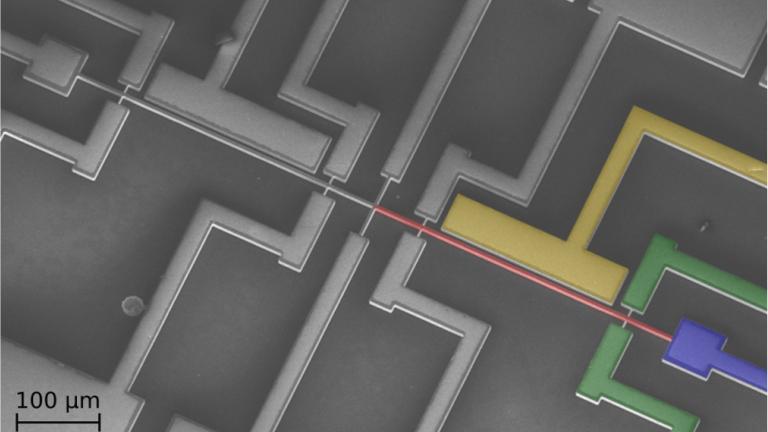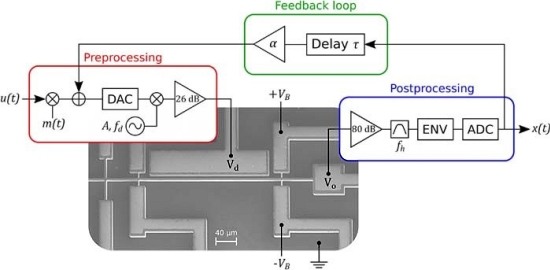TECH

Mechanical microprocessor promises artificial intelligence for robots
Reservoir ComputingAs artificial intelligence becomes increasingly sophisticated, it has been inspiring efforts to develop hardware whose physical architecture is best suited to it.This is the case of neuromorphic computing, which mimics the human brain, typically based on components called memoristors, which mix memory with a processor - one of these prototypes has recently been shown to be able to accelerate artificial intelligence 200 times.But there are other approaches, such as the so-called "reservoir computing".By allowing hardware components to make larger calculations required by artificial intelligence, this strand has already made amazing demonstrations, such as guessing the words before you speak.More surprisingly, a Canadian team has now demonstrated that it is possible to make reservoir computing using non-electronic components, but extremely small electromechanical systems, the so-called MEMS (MicroElectroMechanical Systems).

Mechanical Microprocessor
It was already known that a mechanical processor could use less power than an electronic processor, but Guillaume Dion and his colleagues at Sherbrooke University were the first to build the mechanical computing device based on reservoir computing, dispensing with the tedious "training" required to neural networks to learn.The micromechanical neural network explores the nonlinear dynamics of a microscale silicon beam 20 times thinner than a human hair as it oscillates in space. The results of this oscillation are used to construct a virtual neural network that projects the input signal into the largest space needed for neural computation."Many of the sensors today are built with MEMS, so devices like ours would be the ideal technology to dilute the boundary between sensors and computers," Dion said. "These types of calculations are usually made only in software and computers can be inefficient." , noting that this is particularly interesting for the field of robotics.In the demonstrations, the system was able to switch between different reference tasks commonly used for neural network testing with relative ease, including the classification of spoken sounds and the processing of binary patterns - it achieved an accuracy of 78.2% and 99, 9%, respectively.The team now intends to explore increasingly complicated calculations using the neuromorphic mechanical microprocessor with the expectation of developing small, energy-efficient sensors as well as microcontrollers for robots.Source:Guillaume Dion, Salim Mejaouri, Julien Sylvestre
Journal of Applied Physics

No comments:
Post a Comment